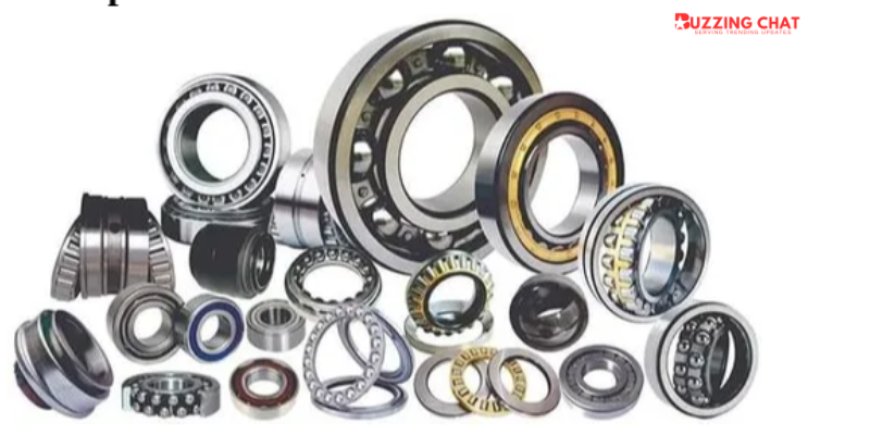Pillow Block Bearing India: 5 Signs of Replacement
Discover 5 warning signs for Pillow Block Bearing India replacement. Learn how to spot damage early and avoid costly downtime or equipment failure.

In the present world, pillow block bearings provide the steady support that make industrial applications possible. Whether in conveyor or fan assemblies, an air conditioner/heater, or construction equipment, mounted bearings and their housings are found in anything that uses a rotating shaft. But, as with any mechanical parts, pillow block bearings deteriorate in the course of operation. However failure to do so, could be expensive downtime, equipment damage or even safety risk.
Here is a guide for Pillow block bearing India that your pillow block bearing might be ready for replacement, and why heading off the problem can save you time, money and frustration. If you are building or running a growing business, you might also find this guide on how to get the first 100 customers for your startup.
5 Warning Signs Your Pillow Block Bearing Needs Replacement
Noise, heat, misalignment, lubrication issues, or visible wear are clear indicators it’s time to replace the bearing before bigger damage occurs.
Noise and vibration are among the first warning signs of bearing failure. Bearings are meant to move as quiet and super smooth. As they go bad, you could get grinding, squealing or thumping noises from within the housing.
What Causes It?
- Contamination: Dirt, either solid or moisture in the bearing can cause rough movement in the bearing.
- Lack of lube (or oil): This allows metal to touch metal.
- Misalignment: As the shaft is not correctly aligned, this can lead to uneven wear and vibration.
Why It Matters:
Be sure to make this happen as it can prove disastrous if not heeded. The vibrations can harm other parts, making them fall off and create fatigue to the structure.
What to Do:
In case of abnormal noise, please check the bearing in time. Clean, re-lube, and then see if it’s in alignment. If it continues, most likely a replacement needs to be done.
2. Overheating
Bearings must run in a defined temperature range. If your pillow block bearing is warm to the touch or stained, it’s not a good indication.
What Causes It?
- Friction: Excess friction from wear or insufficient lubrication.
- Overload: Over-revving the shaft can overpower the bearing to work.
- Lack of ventilation: Closed systems may cause heat to build up and wear the tires faster.
Why It Matters:
High temperatures break down lubricants, distort metal parts and speed up fatigue. In the most severe cases, the bearing may seize or melts inner parts.
What to Do:
Keep bearing temperature in check with infrared thermometers or thermal sensors. If it always hot, check for lubrications problems or unbalanced load. If excessive wear is visible in the bearing, replace it.
3. Shaft Misalignment or Looseness
When in good condition, a pillow block bearing prevents the shaft from being dislodged. If things seem loose or when you push and pull the leaf from the rest of the shaft, your blade seems to wobble or mis-align, it means your bearing is no longer serving its purpose.
What Causes It?
- Fatigue: The internal raceways and rolling elements wear over time.
- Poor installation: If it is improperly mounted, the pumps can fail too early.
- Casing damage: Cracks or distortions of the housing can create alignment problems.
Why It Matters:
If misaligned, the bearing and shaft face a higher load leading to an uneven wear and inefficiency. It also results in belt slippage, gear failure or motor stress.
What to Do:
Inspect for shaft play or movement. Check alignment with a dial indicator or a laser alignment device. If the bearing won't provide enough support to the shaft, then you need to replace it.
4. Lubrication Breakdown
Bearing lubrication is the essence of the bearing. (Without it, there is additional friction, but more on this below). More heat will build up and wear will occur faster. If your pillow block bearing looks to be failing due to a lack of lubrication, you have some work ahead of you.
What Causes It?
- Contaminates: Dust or chemicals can weaken grease or oil.
- Excess Grease: Over-lubrication Excess grease may lead to pressure build-up and seal damage.
- Insufficient Lubrication: Too little grease results in dry operation and metal to metal contact.
Why It Matters:
Lack of lubrication causes accelerated wear, oxidation and bearing failure. It also influences the energy efficiency and maintenance costs.
What to Do:
Examine the bearing for evidence of dry grease, leakage or contamination. Lubricate as recommended by manufacturer for frequency and lube type. If it has been running dry, or has internal damage, replacement is best.
5. Visible Damage or Wear
Occasionally, the clues are right in front of you. Cracking, corroding, pitting or deforming of bearing housing or interior components are signs that the bearings have gone bad.
What Causes It?
- Environmental factors: Materials can deteriorate due to moisture, chemicals or high low temperatures.
- Mechanical Stress: Overloading, shock loads or impact can fracture the housing.
- Aging: The bearing has a life expectancy and the performance will deteriorate over time.
Why It Matters:
The visible defects destroy the structure safety of bearing. It may result in shaft misalignment and high bearing loads, increased friction, and grinding noises with eventual bearing failure.
What to Do:
Conduct regular visual inspections. Check for rust, cracking or wear spots. If it is wearing damage, do not hesitate, replace the bearing now before it causes damage to additional components.
Learn more about small business expansion in this guide on how eCommerce drives small business growth
Bonus Tip: Pro-Active Bearing Life Observation
Today, systems are frequently equipped with sensors and instrumentation for bearing health monitoring. Vibration analysis, temperature and lubrication sensors can warn when something is about to fail.
Preventive Maintenance Checklist:
- Inspect bearings monthly
- Lubricate as per schedule
- Monitor temperature and vibration
- If they are damaged replace seals and housings
- Keep records of bearing replacements
Conclusion
The pillow block bearing may look small; however, it plays a vital part. Knowing how to spot wear based on noise, heat, misalignment, lack of lubrication and visible damage can help prevent pricey repairs and downtime. Frequent checks and regular maintenance are the best approaches to extend bearing life and maximize uptime.
If your bearing shows any of the five indicators, don’t delay. It does cost a bit more, but replacement is usually cheaper than the alternatives of disassembly and reassembly (and possible damage to surrounding items). Quick treatment of your bearings, will make sure that your machines run for years.
What's Your Reaction?
 Like
0
Like
0
 Dislike
0
Dislike
0
 Love
0
Love
0
 Funny
0
Funny
0
 Angry
0
Angry
0
 Sad
0
Sad
0
 Wow
0
Wow
0








































